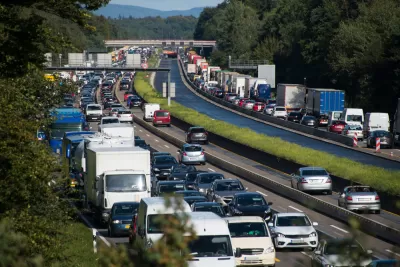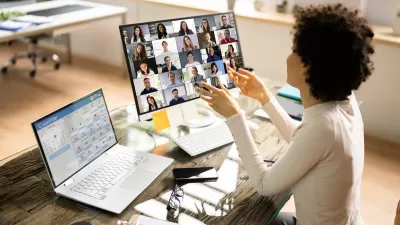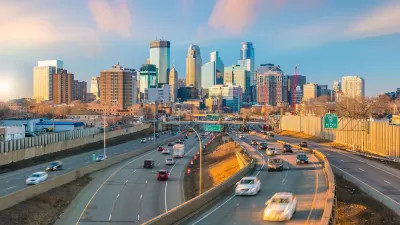If even a small fraction of workers continue to work remotely or have more flexible hours, the resulting reduction in rush hour travelers could have a significant impact on peak hour congestion.

With a third of U.S. workers in jobs that can be performed remotely, the traditional rush hour–that "uniquely awful" time of day when red brake lights know no end and "there is no good way to get around"–could be history. During the pandemic, writes Emily Badger in the New York Times, people not only worked remotely but also adjusted their work schedules to more flexible hours, flattening traffic peaks and reducing congestion. But, even as the economy reawakens and traffic starts to return, "planners, transit agencies and researchers are now considering the remarkable possibility that in many places it won’t revert to its old shape amid newfound work flexibility."
According to Badger, even a small shift in work hours could make a major difference. Because "roadway congestion is nonlinear," even "a modest number of people working from home on a Thursday" could make peak hour commutes "perceptibly less miserable." This goes for passenger comfort on public transit, too. "Until all the seats are gone, more passengers don’t affect you much. But once the aisle starts to fill up, every new body erodes your personal space and compounds chaos at the boarding door." Research has shown that "marginal changes in commute behavior on Jewish holidays, when most employers remain open but a small share of commuters stays home," create visible benefits in rush hour traffic reduction. "In Washington, D.C., compressed schedules and telework policies for federal workers had created noticeably saner traffic on Friday mornings. On the region’s Metrorail, peak ridership before the pandemic was consistently 10 percent to 15 percent lower on Fridays than midweek."
For decades, the "central paradigm of transportation planning" revolved around how to make rush hour less terrible. If we are able to ease demand at peak times, we can "consider a universe where more people don’t have to time their lives to the rhythm of rush hour — and where whole cities aren’t so preoccupied by what to do about it."
FULL STORY: A Little More Remote Work Could Change Rush Hour a Lot

Alabama: Trump Terminates Settlements for Black Communities Harmed By Raw Sewage
Trump deemed the landmark civil rights agreement “illegal DEI and environmental justice policy.”

Planetizen Federal Action Tracker
A weekly monitor of how Trump’s orders and actions are impacting planners and planning in America.

Why Should We Subsidize Public Transportation?
Many public transit agencies face financial stress due to rising costs, declining fare revenue, and declining subsidies. Transit advocates must provide a strong business case for increasing public transit funding.

Understanding Road Diets
An explainer from Momentum highlights the advantages of reducing vehicle lanes in favor of more bike, transit, and pedestrian infrastructure.

New California Law Regulates Warehouse Pollution
A new law tightens building and emissions regulations for large distribution warehouses to mitigate air pollution and traffic in surrounding communities.

Phoenix Announces Opening Date for Light Rail Extension
The South Central extension will connect South Phoenix to downtown and other major hubs starting on June 7.
Urban Design for Planners 1: Software Tools
This six-course series explores essential urban design concepts using open source software and equips planners with the tools they need to participate fully in the urban design process.
Planning for Universal Design
Learn the tools for implementing Universal Design in planning regulations.
Caltrans
Smith Gee Studio
Institute for Housing and Urban Development Studies (IHS)
City of Grandview
Harvard GSD Executive Education
Toledo-Lucas County Plan Commissions
Salt Lake City
NYU Wagner Graduate School of Public Service





























